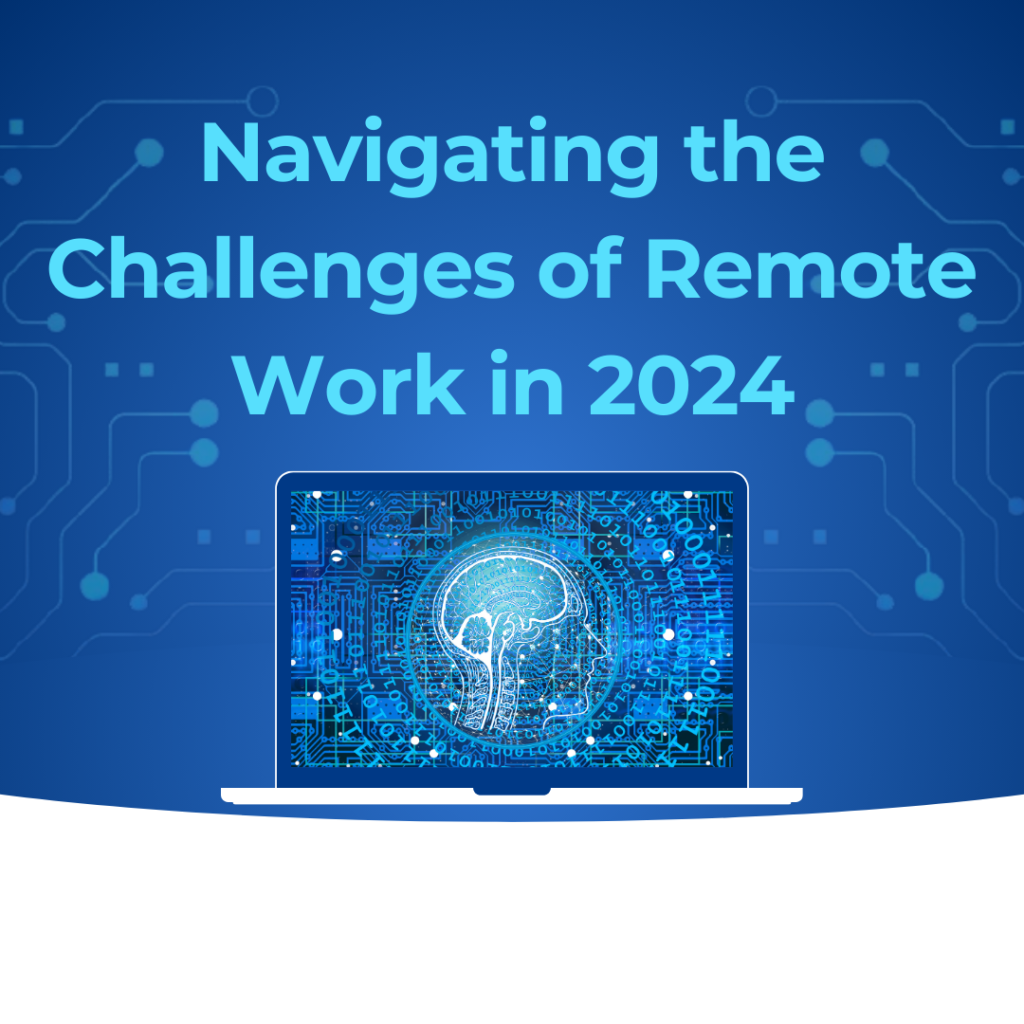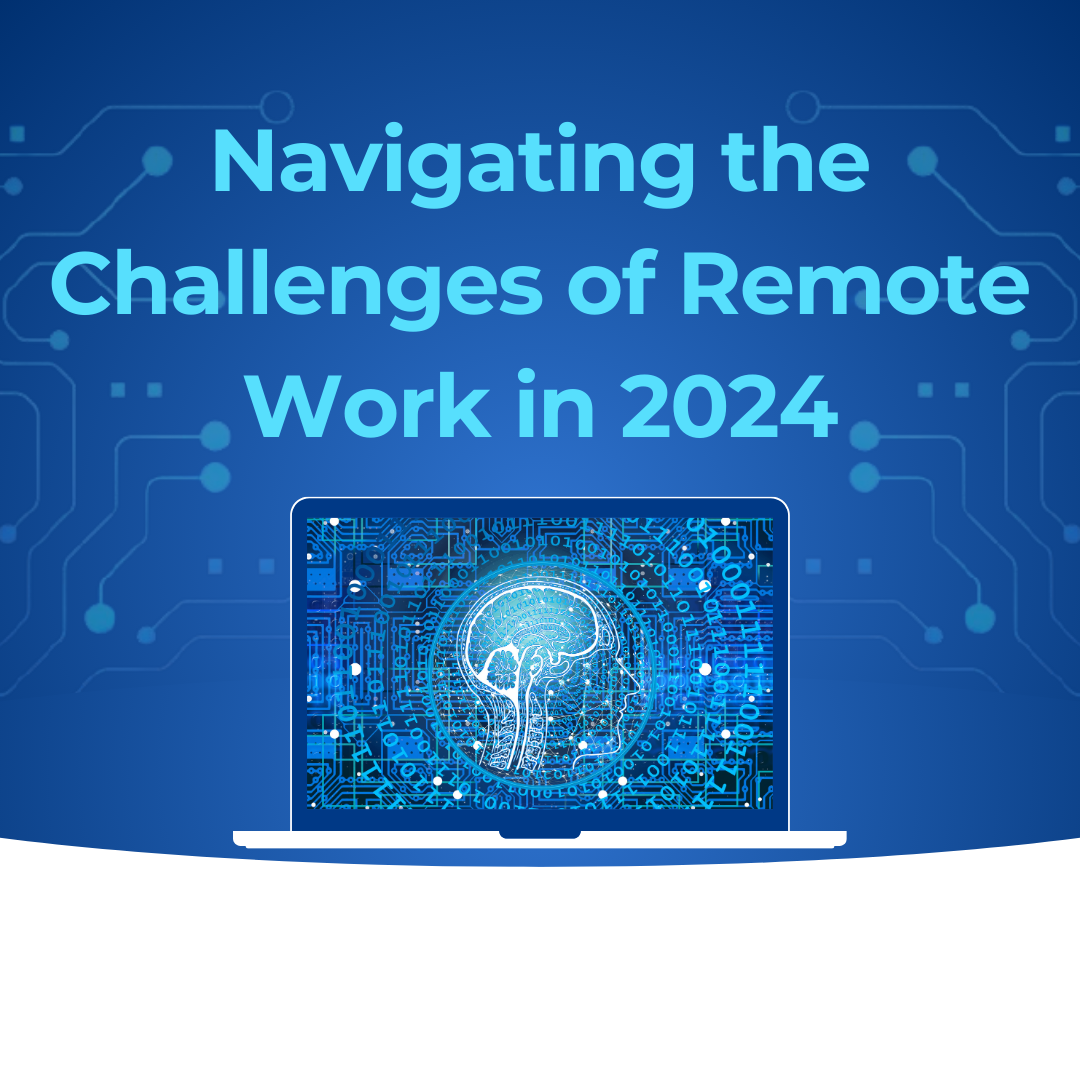Navigating the Challenges of Remote Work in 2024
While it was traveling quite fine before, the past few years have seen more than just transformation in the landscape of work; they have ushered in changing times into how people work because of technology, changing work culture and perhaps the pandemic for some businesses around the globe. Indeed, 2024 is fast approaching, and in all these fields and organizations, remote work is something of the past or neither here nor there in terms of importance. Navigating the Challenges of Remote Work in 2024. Whether one such as an organization adopts a “hybrid approach,” a full-time remote model, or flexible working schedule, everyone has had to learn new modalities for working.
Secondly, but equally important, are the benefits: flexibility, fewer hours in a car, and a good balance between work and life. At the same time, however, it also brings a set of its own challenges: barriers to communication, productivity, and well-being of employees. Hence, the requirement for all these companies, as they are coming into this new mode of working, is to use this theory in overcoming barriers to form an effective, economical, and long-term remote working environment. Navigating the Challenges of Remote Work in 2024.
This article would highlight the common issues associated with working remotely in 2024 and possible ways to deal with them. Such a venture makes an effort by employers and employees to help remote working remain effective and pleasurable.
1. Communication Breakdowns
There can be communication breakdowns. No exposure with face-to-face conversations makes it a hassle to communicate using words other than those that would be put into their letters. Not only do the facial expressions add up to the words, but the body language and accidental conversations in the office space further lead to misinterpretation and delayed communication.
Ways to Overcome Communication Challenges
Navigating the Challenges of Remote Work in 2024.
To combat any consequences from broken chains of communication, teams have to be deliberate about how they communicate. Here are some ways:
Communicating with the Right Tools: The team has a variety of communication tools at its disposal such as Slack, Microsoft Teams, Zoom, and Google Meet, so it is essential for teams to decide on suitable platforms to use for different types of communication. Instant messaging platforms have the advantage of being able to facilitate their use with video for those more intensive discussions that take place.
Establish Clear Expectations: Clear guidelines shall be laid down for when and how communication should take place. Expectations on response time, preferred communication channels, and when video should be used could be some of those defined areas. Less ambiguity is created, and it keeps everyone aligned.
Encourage Open Dialogue: Create a culture where employees feel comfortable expressing their concerns or asking questions. Maintaining regular check-ins with virtual team meetings will also help create this atmosphere where team members feel connected and ‘in tune’ with each other.
2. Maintaining Productivity
However, remote working can really be beneficial for balancing life and work schedules; it does pose some productivity-related challenges. For instance, most of the time, in-person supervision is missing or structure is not there in an environment, thus leaving employees to twist and turn around trying to focus; they may be burdened with other responsibilities like family members or even personal tasks along with distraction from their homes.
Approaches to Keeping Productivity Up
Productivity in work-from-home environments requires self-control and some kind of framework. Following are the strategies that assure the employees’ productivity would not be tainted by their work-from-home schedules:
Most importantly, creating a dedicated workspace incites employees to set up a workspace, reasonably limited and free from all other distractions. This can even include the touch of having that space quiet and clutter-free so that it is likely to increase concentration and decrease the feeling of being pulled toward the whims of an employee’s nonwork hours.
Set Clear Goals and Deadlines: Clear and well-explained objectives, together with timelines for tasks, should clearly stipulate what should be expected of every employee. Using plumage tools like Trello, Asana, or Monday.com will help ensure the tracking of progress.
Encourage Time Management Techniques: It may help workers maintain energy and focus throughout the working. Day by using some techniques like Pomodoro which divides the working day into intervals followed by short breaks. Encourage employees to find the best time management method for them.
Measure Results, Not Hours: Quality of produced work as opposed to quantity counts; prioritize quality over quantity in terms of hours spent on work. Measurement of results cuts down micromanagement and builds trust and self-governing-expense management on the part of remote workers.
3. Isolation and Mental Health Challenges
The sense of isolation is one of the main demerits that remote work brings about. Employees are likely to miss other interactions with their colleagues because they do not welcome other daily face-to-face contacts. Their absence has caused feelings of loneliness and disconnection from one’s colleagues and organization, leading to low motivation, reduced engagement, and in extreme cases, burnout.
Mental health matters
The mental well-being of remote employees should receive attention in the year 2024. Below are ways that employers can show their support for team members’ mental health:
Encourage the Formation of Community: Setting up regular online social events like happy hours online, team-building exercise events, and regular informal chat groups creates. Environment where remote workers connect through non-business-related interaction.
Employee participation in such activities helps the employee to continue to feel part of their workplace.
Encourage Regular Breaks: Through scheduling leisurely activities, employees are encouraged to break away from their computers and stretch in an effort to recharge and rejuvenate themselves.
Provide Mental Health Resources: Having mental health resources accessible-including perhaps advisements and/or employee assistance programs (EAPS)-helps employees who may be battling mental issues within themselves. To add to that a mental health day policy should also allow for employees’ taking a leave break whenever necessary.
Watch Out for Warning Signs: Recommendations from mangers should be geared to identifying any sign of stress or burnout in their remote work personnel, such as changes in behaviors or less communication and reduced performance. Early offering of support may prevent much larger issues later down the road.
4. Time Zone and Cultural Differences
The coordination of events, the management of projects, and even just trying to find a time that works for everyone can get hectic-difficult for global remote teams scattered across different time zones and cultures. These difficulties often lead to delays, frustration, and miscommunication among teams.
Managing Time Zone Differences
A few approaches can help teams overcome such challenges:
A Shared Calendar: Tools like World Time Buddy or Google Calendar can help manage and visualize time zones. Ensure that meetings are agreeable to most team members, rotating them whenever necessary for fairness.
Desynchronous Work: Whenever possible encourage desynchronous work where personnel can work on projects without having to share the same time schedules. Slack, google docs, project management tools allow teams to work on a task at their convenience.
Flexibility or Flexibility: It makes the organization into a flexible culture of working, whereby employees can now change their hours based on family and personal commitments. In fact, the people can adjust their working hours as per family obligations. This flexibility is one of the major benefits of working from home and can be put into use by teams outside time zones.
5. Technology and Security Concerns
Any technical problem or breach of security becomes a great hindrance to the productivity of the organization and functions in general while working from home relying heavily on technology. Some common concerns of a remote team are slow internet speed, malfunctioning software, and risks of cybersecurity.
Ratifying Technology Reliability
Below are ways on how you can limit technology-related issues, particularly security ones:
Invest on Trustworthy Tools: Allocate funds for expensive, quality software and tools for remote team-based activities. Ensure that employees have the means for hardware and connections to do their work efficiently.
Routine IT Support: Employees need support and relevant hardware to gain access to a clear. IT specialist who can help them sort through any problems. This can involve remote troubleshooting or providing repair aids to help minimize downtime for teams.
Cybersecurity Training: Employees should be trained on how to adhere to cybersecurity best practices. It may involve training them on how to identify phishing scams, create strong passwords, and handle company information securely. Another good recommendation is to establish multi-factor authentication (MFA) on sensitive accounts. Navigating the Challenges of Remote Work in 2024.
6. Work-Life Balance and Overwork
One of the tough things about remote working is to have a work-life balance. When working from home, the time for personal and professional is easily poked into each other. Thus, it tends to stretch the work hours, which may lead to stress and burnout.
Work-Life Balance
Below is how an employee can work on balancing private life and corporate life for the remote worker:
Establish some Identity with your workspace: Employees can be encouraged to keep boundaries around their working hours. Such boundary determination may include a work-closing time for the workday or not answering emails after office hours.
Encourage Time Off: Encourage your employees to make use of their allocated vacation and personal off periods. Time off is an important bean. Not only can time off be energizing, but in the long run, it helps maintain efficiency.
Model Healthy Work Habits: Healthy work habits should be modeled by managers and team leaders at all times. The first example will be, keeping the breaks even when these things are rather busy, and respecting the boundaries and working hours as well. It will be a marvelous example to see within the whole team as it also emphasizes self-care.
Wrap-Up
Working from home in 2024 will only be manageable when employers and employees combine forces. The major downsides of remote jobs will outweigh some of its positive possibilities. Open and honest communication, productivity, mental well-being, the impact of time zones, availability of technology, and a good work-life balance. Important for the success of remote teams in a digital-globalized way of work.
Adaptable and proactive problem solvers who will invest in creating a portable system. An efficient remote workforce will find the secret to success in these organizations. As they continue to adapt to remote work. It will turn out to be more than just a passing phase for remote organization models, promising a more flexible . Even better work-life balance for employees.


